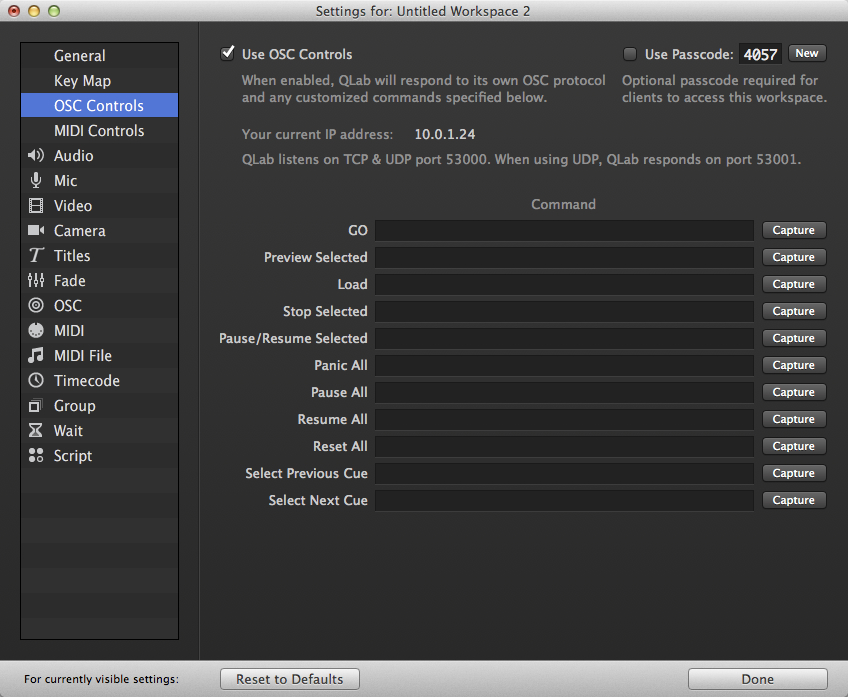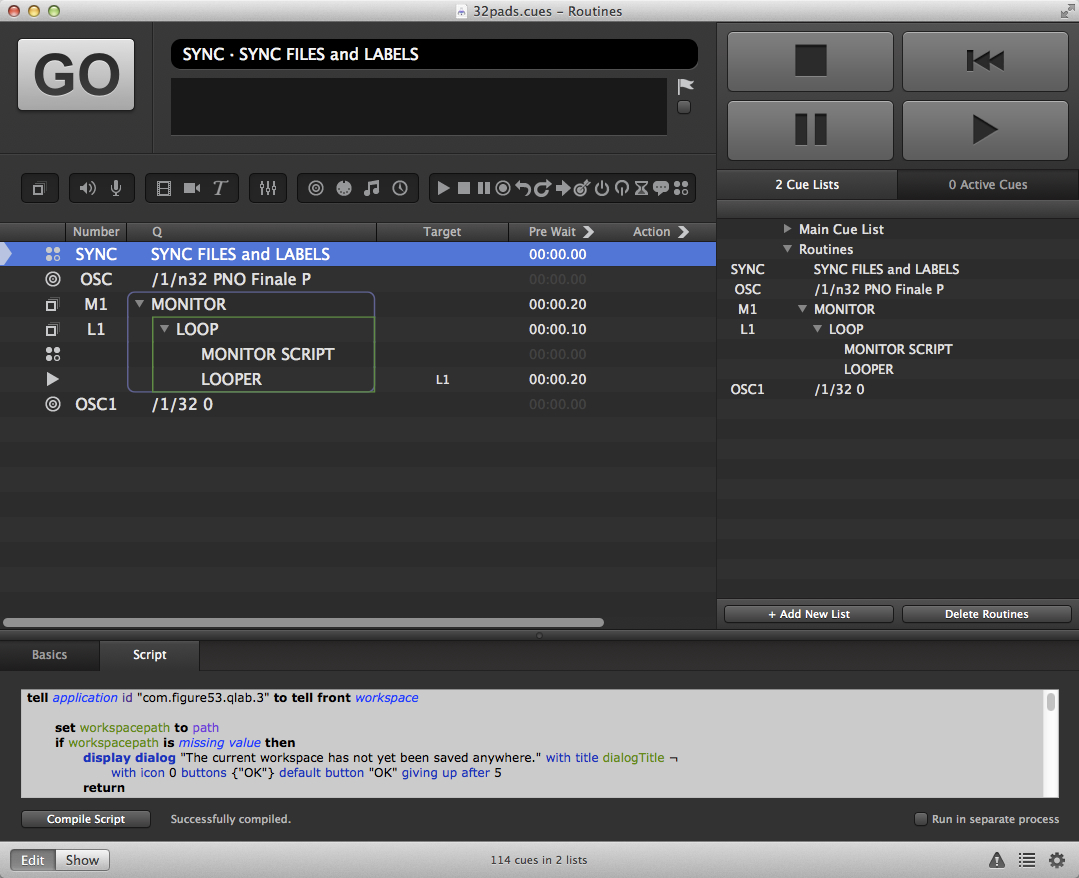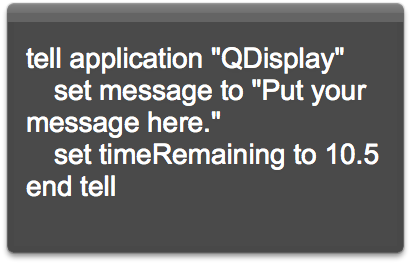


In QLab the cue number can be any string, to support things like letter "numbers". The cue "number" is, as you guess, a string. I'm assuming in my example command that it's ASCII, since there are so many potential cue number formats (even-god forbid-letter cues :-) )? It looks from the API where it shows "/cue//start that the cue number would not be a separate argument, and instead is part of the method, but maybe it should be an argument instead? > I'm sure I'm missing something obvious, but I also couldn't find in your OSC API any mention of what the cue number format is. > Now I tried to fire a specific cue, and I got stuck again. > will fire the next cue in the current workspace. Thanks to your tip about the console logging, I'm able to get an "unable to parse OSC method address" whenever there's a problem, and I tested a bunch of options and it needed all of these parts to work. The 0A and 0D is the 'ol carriage return/line feed.

The "," is there to indicate that there are no "arguments" to this "method". > The null (!00) is there to indicate the end of the "version" string, and must round out the string to a total byte count (not including the "/") evenly divisible by four ("version" has seven characters). > So, to send the "Version" command (the simplest one, it seemed to me), you have to actually send (where the "!" indicates to Medialon Manager to send the associated hex value of non-alphanumeric ASCII characters): > You were right-I forgot the null padding, and also left out the argument type tag indicator. Let me know if I can help troubleshoot further. Hopefully the above logging output provides a lead. (In OSC everything is null-terminated and a multiple of 4 bytes.) I'm sure you're already aware of that, just figured I'd mention it as something to double check. One potential hazard in writing the commands directly in raw ASCII is the necessity of padding various fields to multiples of 4 bytes. 16:32:26.811 QLab sent OSC message: /cue/1/colorName green If you are using 3.0.6, there is another option to turn on even more debug logging.ĭefaults write .3 debugIncomingOSC -bool YES You can review these log messages using the /Applications/Utilities/Console.appįor example, the "/cue/1/start" message would produce something like:
#QLAB OSC API CODE#
You can check examples of the code in action from this download.If you go to QLab -> Preferences -> Logging Level: 2 you will get log messages associated with the incoming OSC messages. In the next tutorial I will go through the python code to send an OSC message.

If it doesn’t return an error you have successfully installed pyOSC! After the command line stops installing, you can check to make sure everything installed properly by entering the python console and importing the library, like this:
#QLAB OSC API PASSWORD#
You might be prompted for your password since its a sudo command. One of them is called “setup.py” We want to run this file in order to use OSC. You can again use “ls” to see all of the files within the directory. You should see a folder called “devel.” This is what we just cloned from the GIT repository. This command lists all of the folders/files in the current directory. In the shell type:Īfter the new directory is create you can check to make sure everything installed correctly by typing: We will be using this library called pyOSC.Īssuming you are logged or SSHed into your Pi, the first thing we will need to do is clone the GIT repository onto our device.
#QLAB OSC API INSTALL#
NOTE: It is completely possible to install and run all of this in GUI, however I will be doing all of it in command line. This tutorial will run you through the basics of installing OSC onto your raspberry pi and using it in python. If you are not familiar with the basics of OSC you should check out this website. There are many ways of getting data to and from it, but one of the easiest ways is with Open Sound Control (OSC). Alright so you have a Raspberry Pi that you would like to incorporate into a media project some how.


 0 kommentar(er)
0 kommentar(er)
